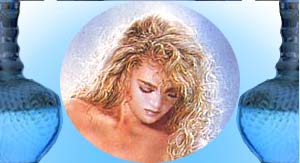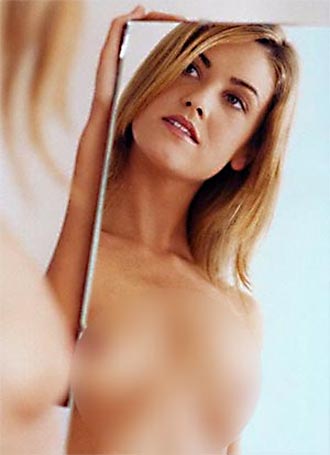Anti-ageing Cosmetic Product

Women have been using cosmetics since time immemorial. To add to the natural allure and look youthful, cosmetics have always been a woman's best-kept secret. Cosmetics can be used to play up a woman's best features as well as conceal flaws and skin problems. From ancient Egyptian times to the present day range of cosmetic products, we trace the origin of cosmetics. Let us take a look at how to take care of our cosmetic products. We also examine anti-aging cosmetic products that promise to reduce wrinkles and take the years off your face.
Anti aging cosmetic product
Women and men have always been in search of the elixir of youthfulness and it is little wonder that anti aging creams are an extremely popular segment of cosmetic products. Many an anti aging cosmetic product is based on Retinoic acid. This is known to smoothen skin and reduce wrinkles.
But it may sometimes cause itching and soreness in some women. AHAs (Alpha Hydroxy Acids) are also known to peel off a layer of skin leaving behind a smoother surface. Many dermatologists agree that the regular use of sunscreens with the right protection factor may go a long way in controlling the effects of aging on the skin.
Anti aging creams containing vitamins, enzymes and lipsomes are sold by many cosmetic brands. Most of them contain water and moisturizing agents since youthful skin is all about achieving a smooth and plump yet translucent texture to your skin.
Care of cosmetic products
Make up cosmetic products must never be shared. This can lead to infection. You should not add water or other liquids to a hardened cosmetic product as it may induce bacterial growth. Expiry dates of cosmetic products must be carefully checked. If there is any change in color or odor of the cosmetic, it is best to discard it. Cosmetic products must be kept out of sunlight and direct heat. Aerosol cosmetic products must not be kept near heat.
Origin of Cosmetics
Ancient Egyptians were innovative in developing natural formulas to take care of various skin problems. A look at the Egyptian pictures of yore shows that cosmetics were being used even then for beautification. It would be surprising to know that they had cosmetic products for stretch marks, wrinkles and scars.
Ancient Egyptians used face creams, body oils and eye makeup to accentuate their eyes. The eye makeup of ancient Egyptian women was made of copper and lead ore - Mesdemet. This served to ward off the evil spirits as well. It was combined with burnt almonds, ash and ochre to achieve a wonderful color that could be applied around the eyes.
The nails and lips were not ignored. Henna and other products were mixed to dye the nails. The origin of cosmetics can be traced to natural cleansers made of vegetable and animal oil. Apparently, affluent Egyptian women accentuated their eyebrows with creams made from sheep's fat, lead and soot.
Greek and Roman women also spared no effort in using various concoctions to appear young and beautiful. Ancient Indian women used herbal cosmetics based on their ancient texts. Some of these products used natural products and find favor with many women even to this day. The Victorian
era did not look favorably on the use of cosmetics and make up. It was considered vulgar to resort to cosmetic products.
The Edwardian era saw extensive use of cosmetics to conceal age and unhealthy eating habits. Women of that period relied heavily on cosmetics such as anti-aging cosmetic products as well as face creams. The concept of beauty salons then took root. The famous salons such as the House of Cyclax in London and Helena Rubenstein had their beginnings in this period. The cosmetic products industry took off in a big way in the 20th century. Cosmetic products were manufactured and sold in leading stores.
Make up
trends kept pace with changing fashions. Europe, especially France and Italy saw many cosmetic manufacturing units set up to create new fragrances and modern cosmetic products. Chemical processes were used to replace natural methods of creating cosmetics and perfumes. Mass manufacture of cosmetics also began in America in the 1920s.
The cosmetic industry went through a rough phase during World War II but made up for lost time thereafter. Movie stars of Hollywood influenced make up styles and fashion. Pancake
makeup, face powders, tanning products and other cosmetic products were advertised to lure women into using these cosmetics. Cosmetic products have come a long way from the ancient concoctions and preparations.
Be it lipsticks, skin care products, nail polish, creams, eye shadows or sunscreens, moisturizers and mascara, there is no dearth of brands to choose from.
You can pick up Estee Lauder, Elizabeth Arden, Mac Cosmetics, Mary Kay Cosmetics, Avon, Clinique, L'Oreal, Bobbi Brown cosmetics and even brands such as Oriflame, body Shop, Revlon, L'Oréal and Sheisido. From its humble origins, cosmetic industry has now become a huge global sector that is dominated by multinational companies.
Top of the Page: Anti-ageing Cosmetic Product
Tags:#cosmetic review #origin cosmetic #Cosmetic product #anti-ageing cosmetic product
 Beauty
Beauty Cosmetic Surgery
Face
Cheek Implants
Mini Facelift
Non Surgical Face Lift
Eyebrow Transplantation
Cosmetic Eye Surgery
Ear Plastic Surgery
Rhinoplasty
Chin Liposuction
Cosmetic Dentistry
Facial Cosmetic Surgery
Chin Surgery
Reconstructive Facial Surgery
Body
Sublative Rejuvenation
Lower Body Lift
Anti-ageing Cosmetics
Wart Removal
Mole Removal
Breast Augmentation
Liposuction
Liposuction Surgery
Cosmetic Laser Surgery
Spider Vein Laser Surgery
Abdominal Liposuction
Umbilicoplasty Surgery
Plasma Skin Resurfacing
Skin Tag Removal
Top of the Page: Anti-ageing Cosmetic Product
Popularity Index: 101,594

